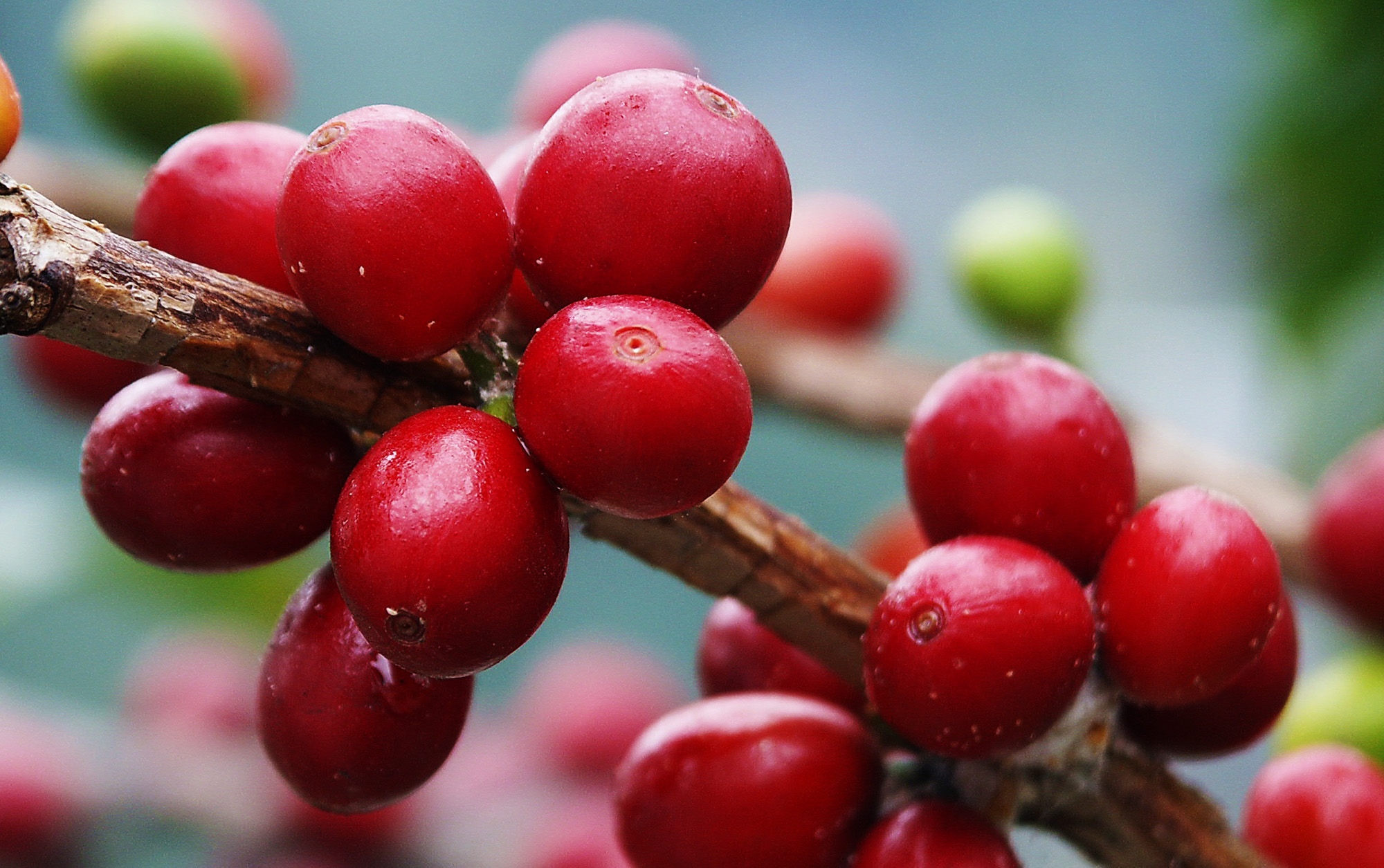Here Hugo Luiz Portes da Silva walks us through the final stage in the development of the coffee cherry — ripening. Hugo explain when this occurs in Minas Gerais near Saul Paolo.
Many fruits ripen after their metabolism triggers the release of a hormone called ethylene. Plants of this type are known as climacteric fruits. (M. Knee, 2002. Pg 267). A common commercial practice used in the production of other climacteric fruits such as avocados, bananas, and tomatoes is to harvest them before they are fully ripe which give a little more time for them to reach a perfectly ripe condition once they arrive, sometimes weeks later at market. In contrast, some examples of non-climacteric fruits are citrus, strawberries which do not ripen any further after they are harvested from the tree.
When coffee cherries ripen the following chemical changes occur:
- Chlorophyll degradation
- Synthesis of pigments (carotenoids, anthocyanins, etc.)
- Reduction of phenolic compounds, i.e. a decrease in astringency
- Increase of volatile compounds such as esters, aldehydes, ketones, alcohols etc., responsible for the aroma of mature fruits
 Picture: Coffee cherries, ripening on tree.
Picture: Coffee cherries, ripening on tree.
Research by L. F. P. Pereira et al, (2005) suggests that coffee is a climacteric fruit. However, unlike bananas or avocado growers, coffee farmers don’t have the luxury of a relatively gradual ripening period time. Bananas are usually harvested when they are about 75% ripe; whereas coffee flavour is optimal only when perfectly ripe cherries are harvested. The trouble is, due to coffee’s climacteric nature, ‘perfectly ripe’ becomes over-ripe in just a few hours and the beans can quickly develop fermenty flavours. There is some urgency in getting the coffee processing phase underway almost immediately after it is harvested. Wintgens (2004, pg. 719) sets a strict 20-hour time limit for the commencement of the processing phase.
Coffee beans are relatively heavy seeds,